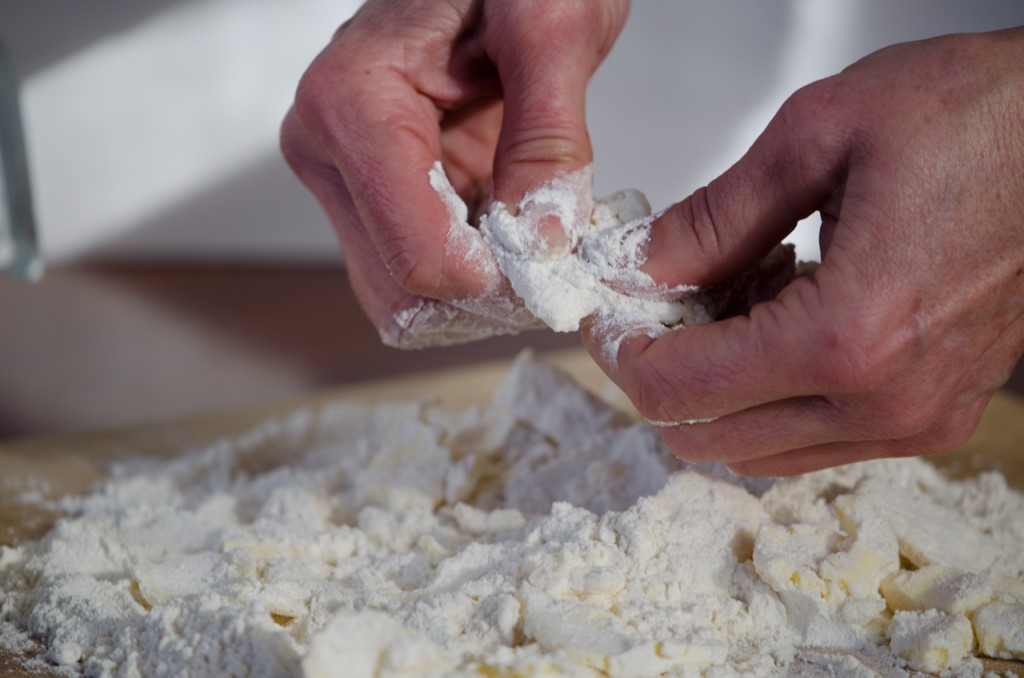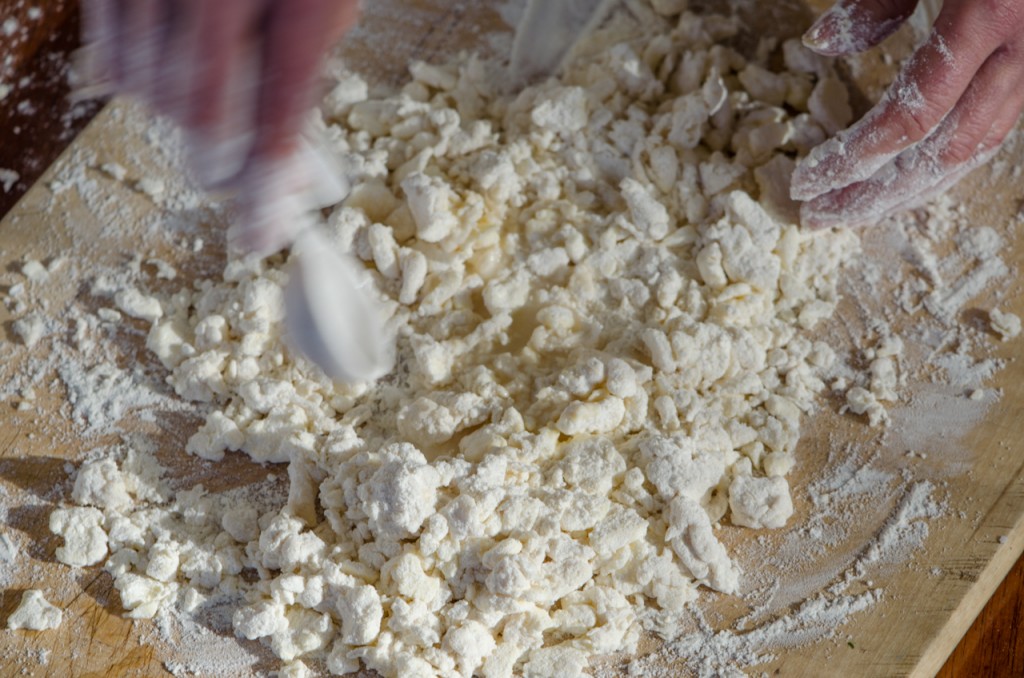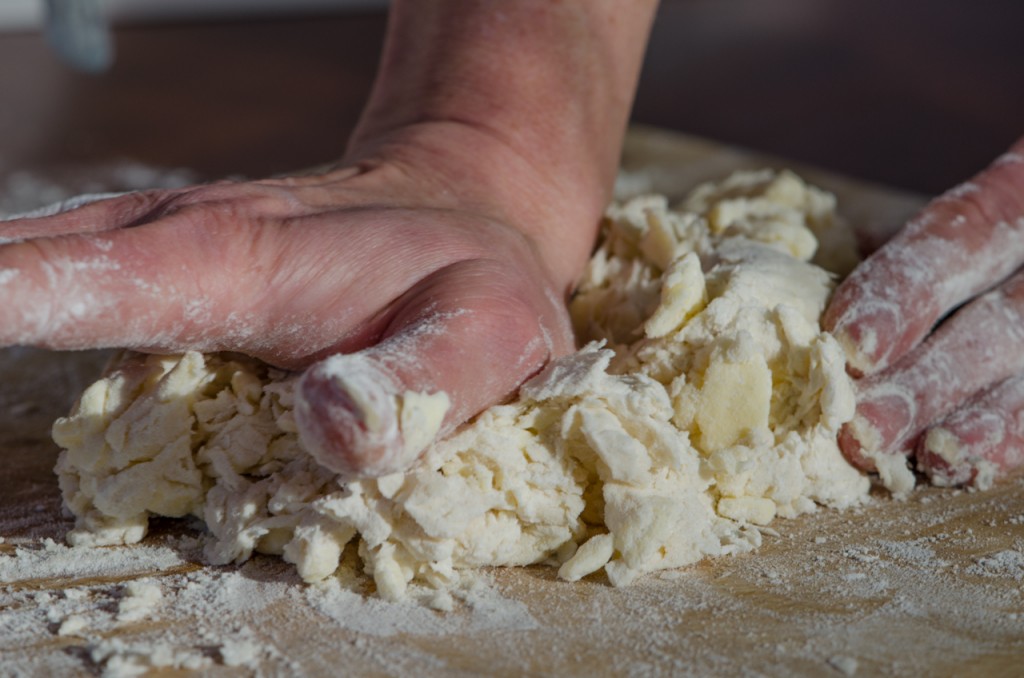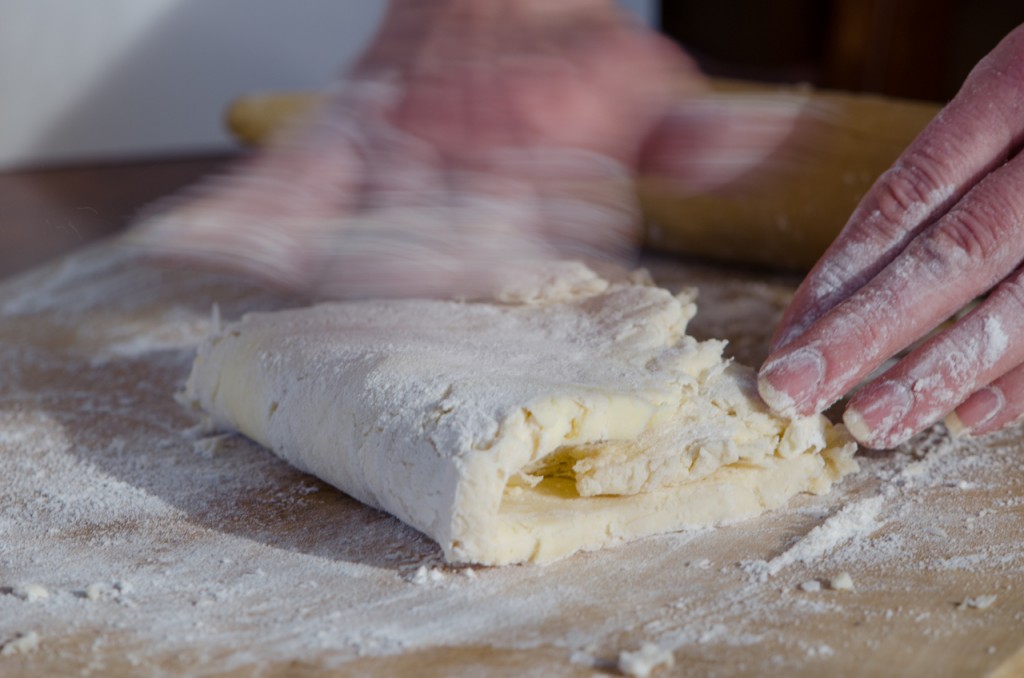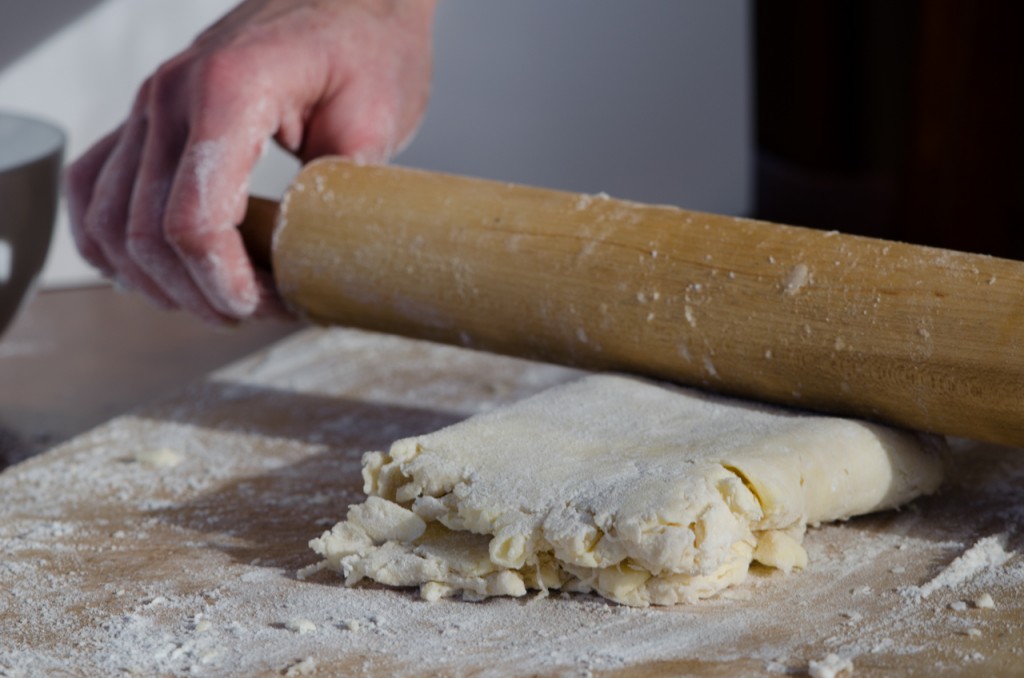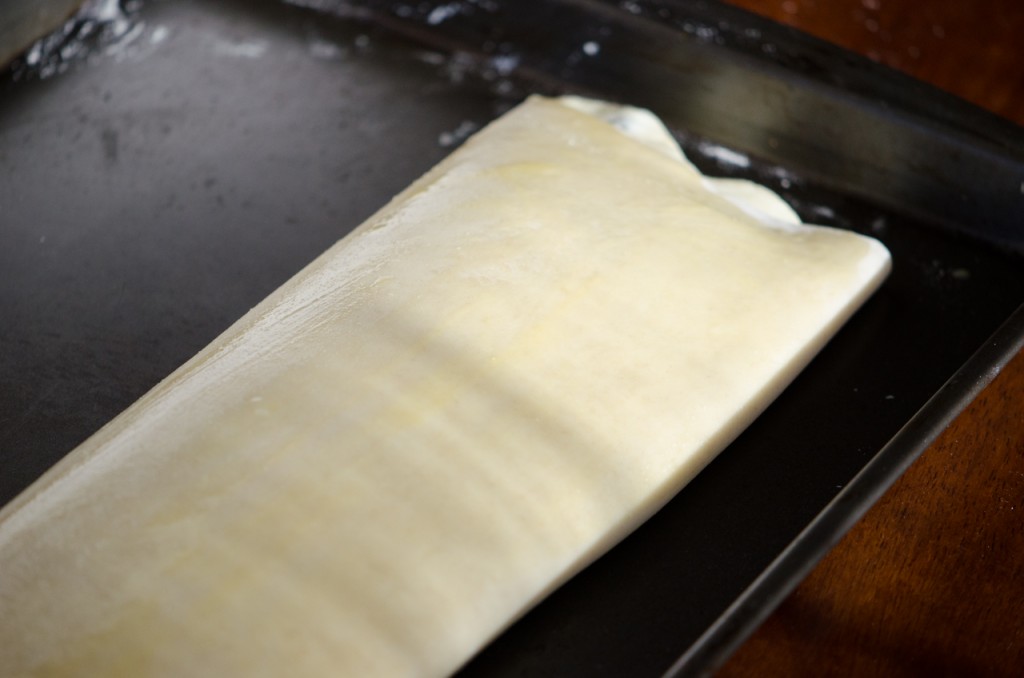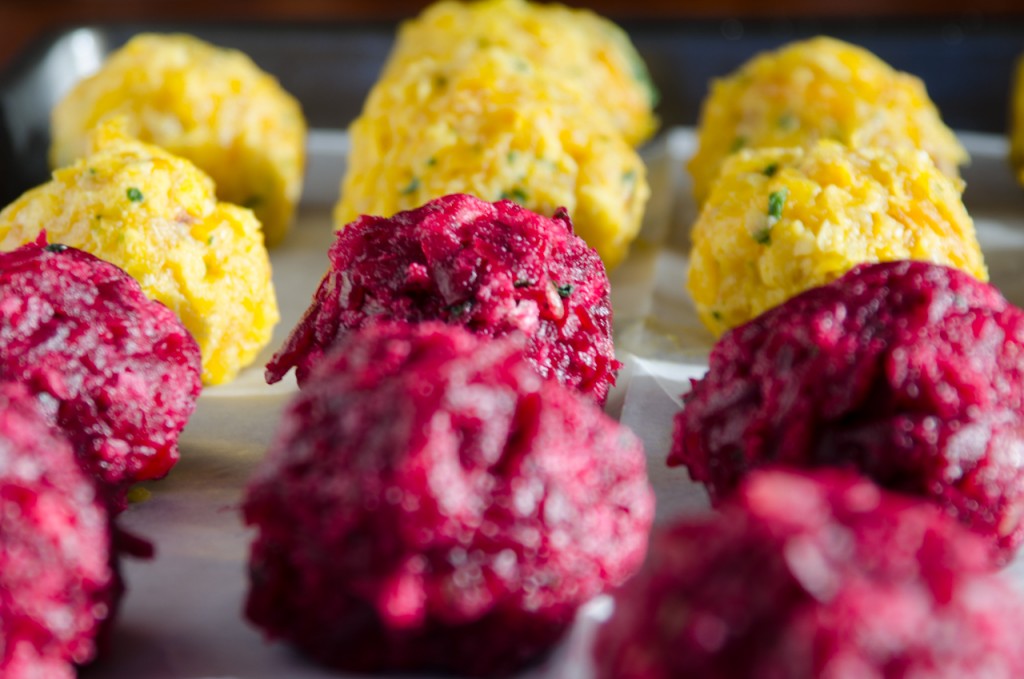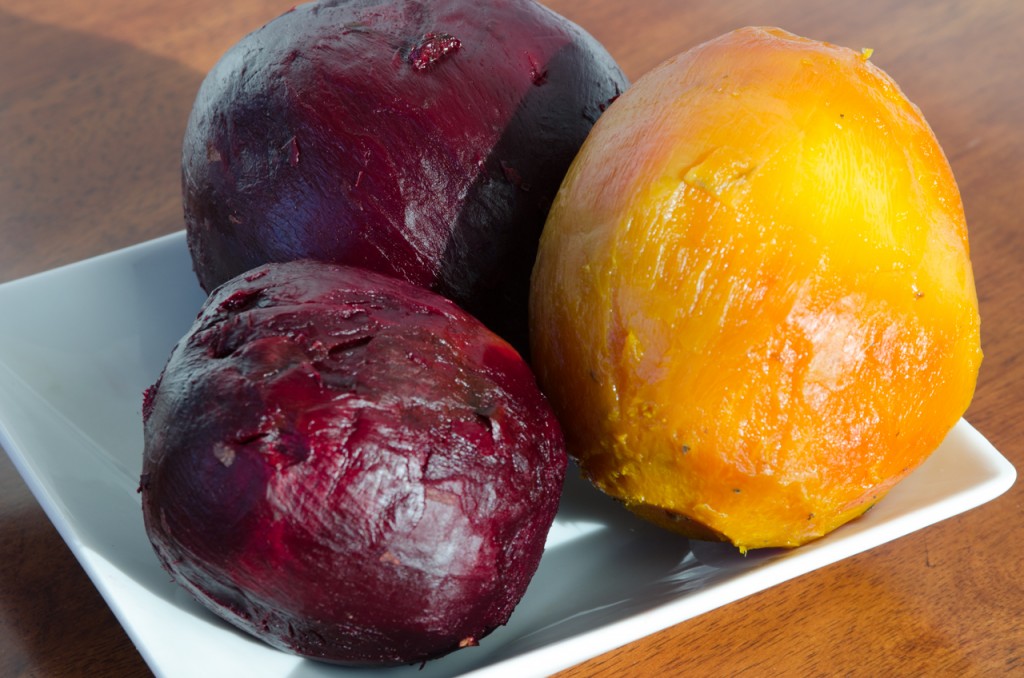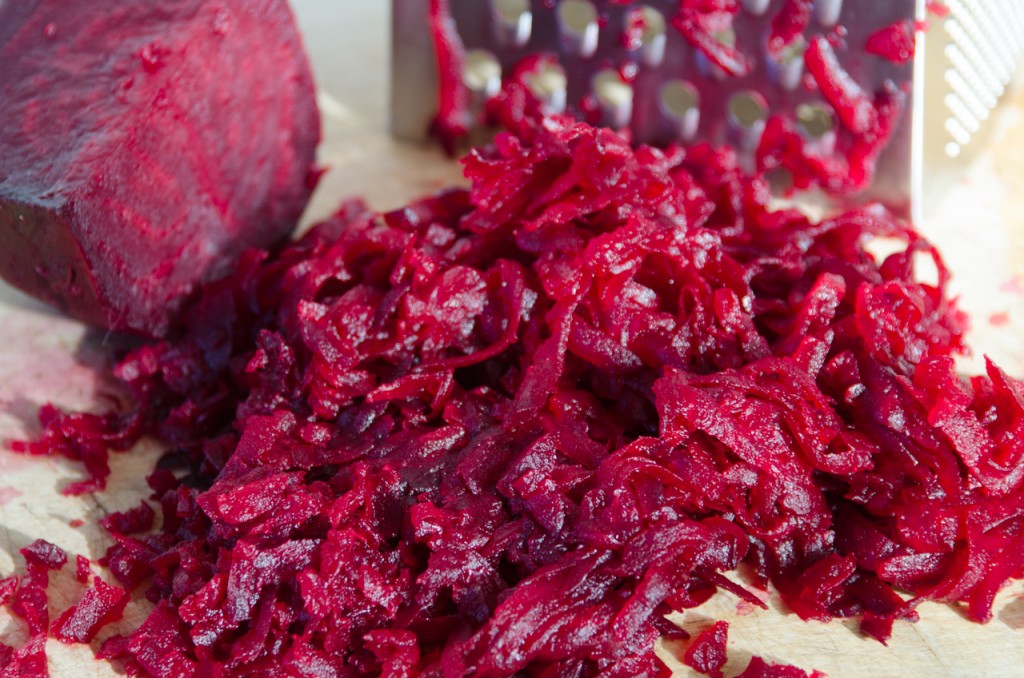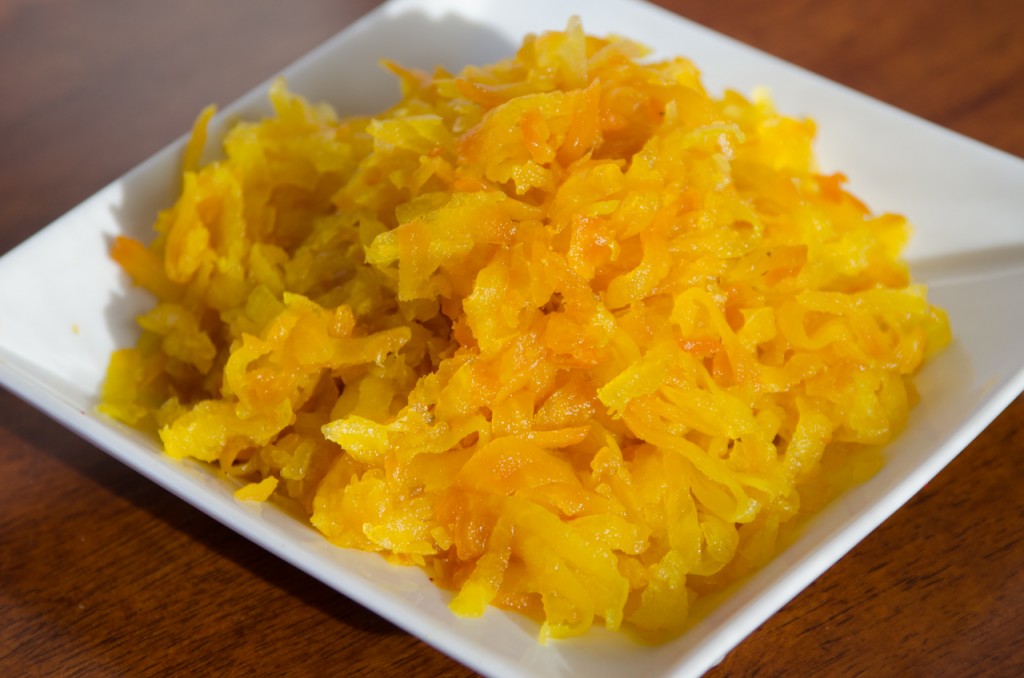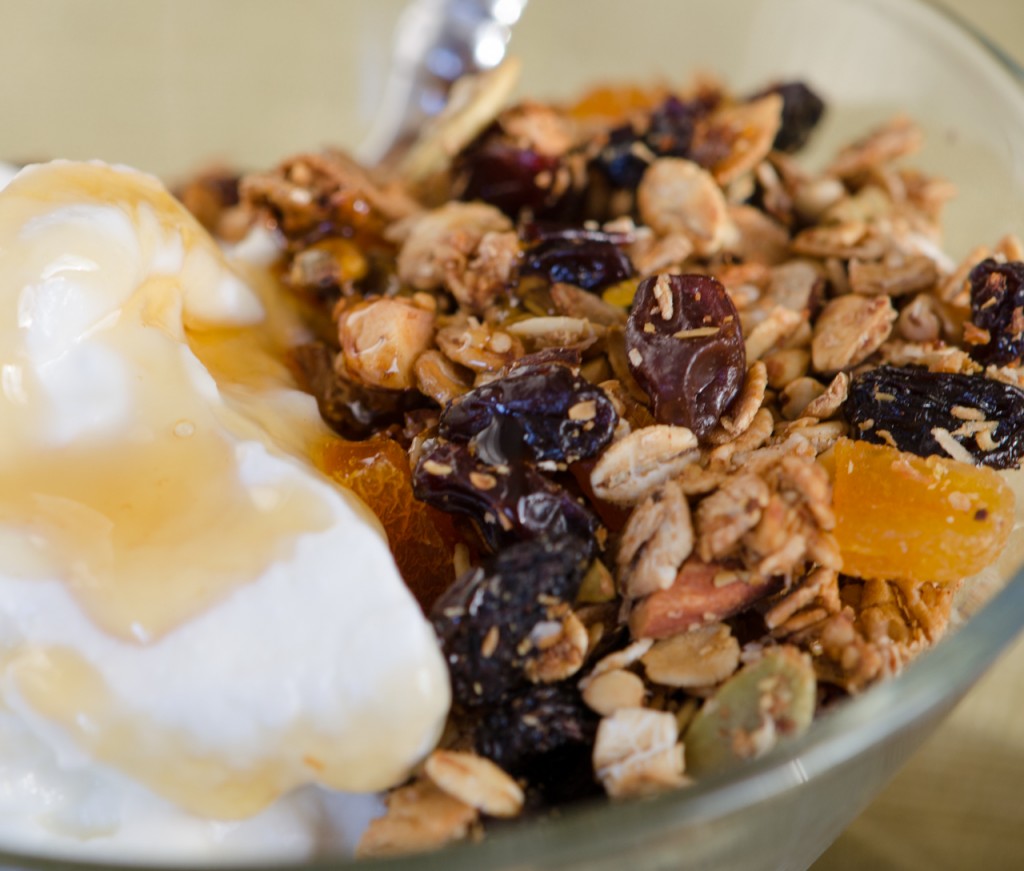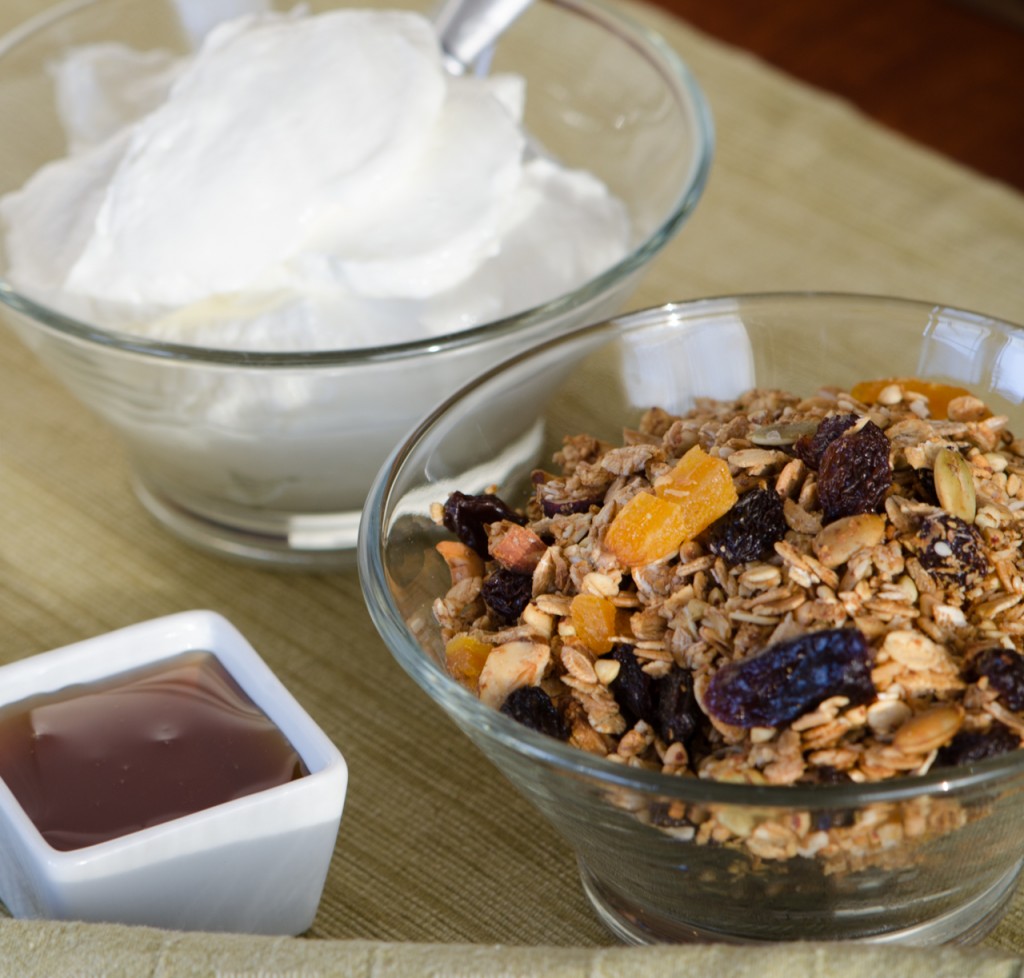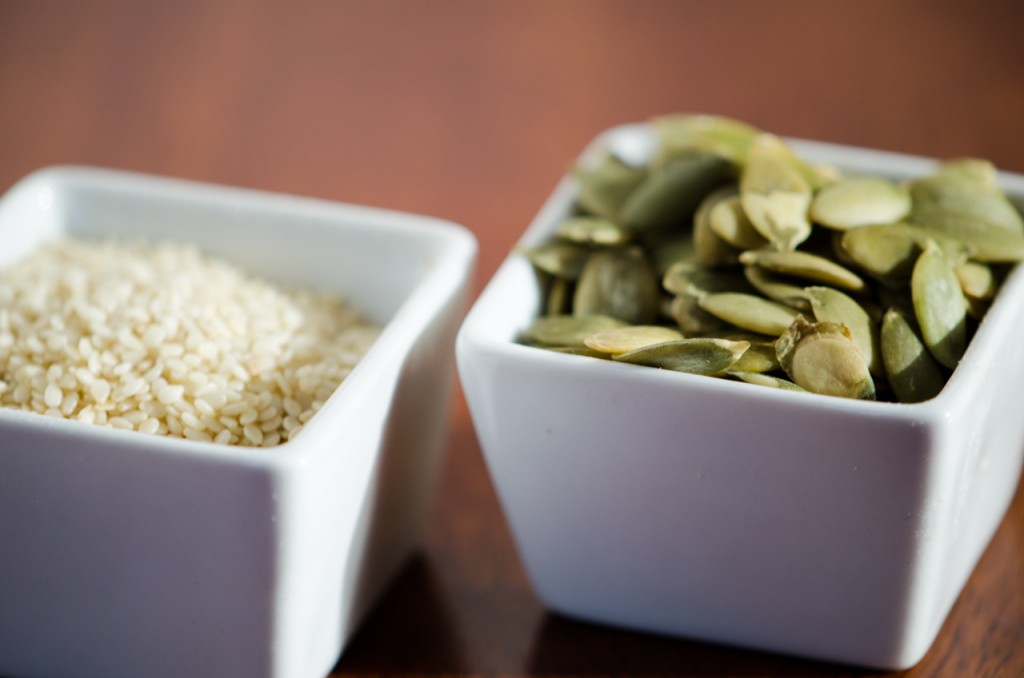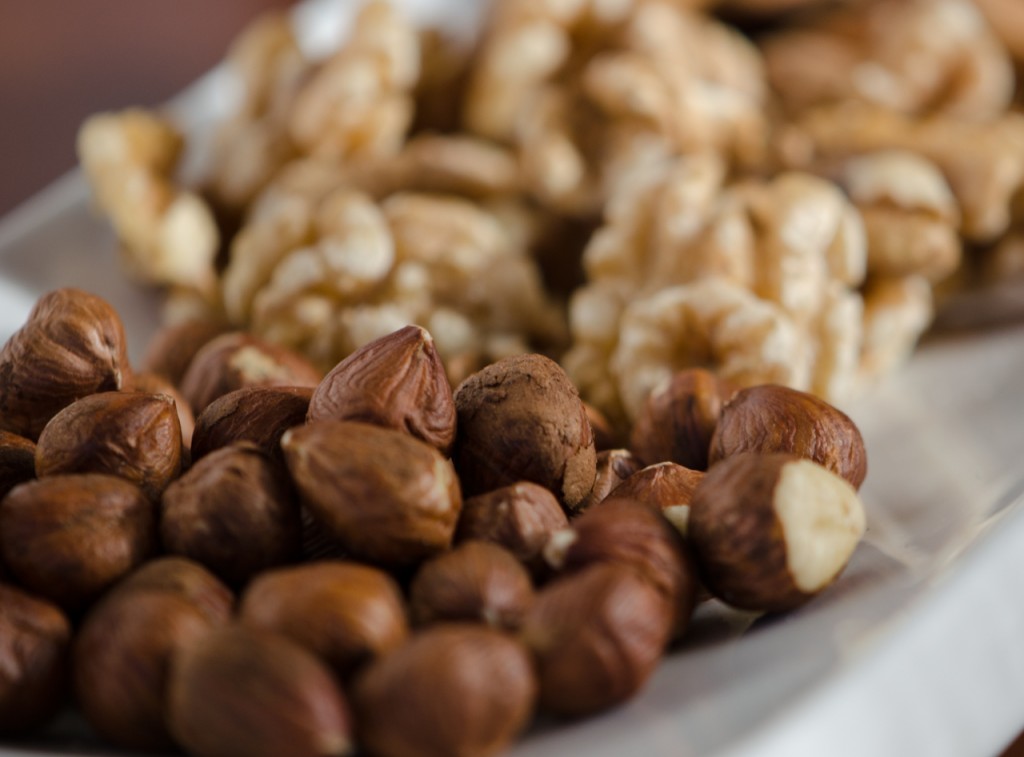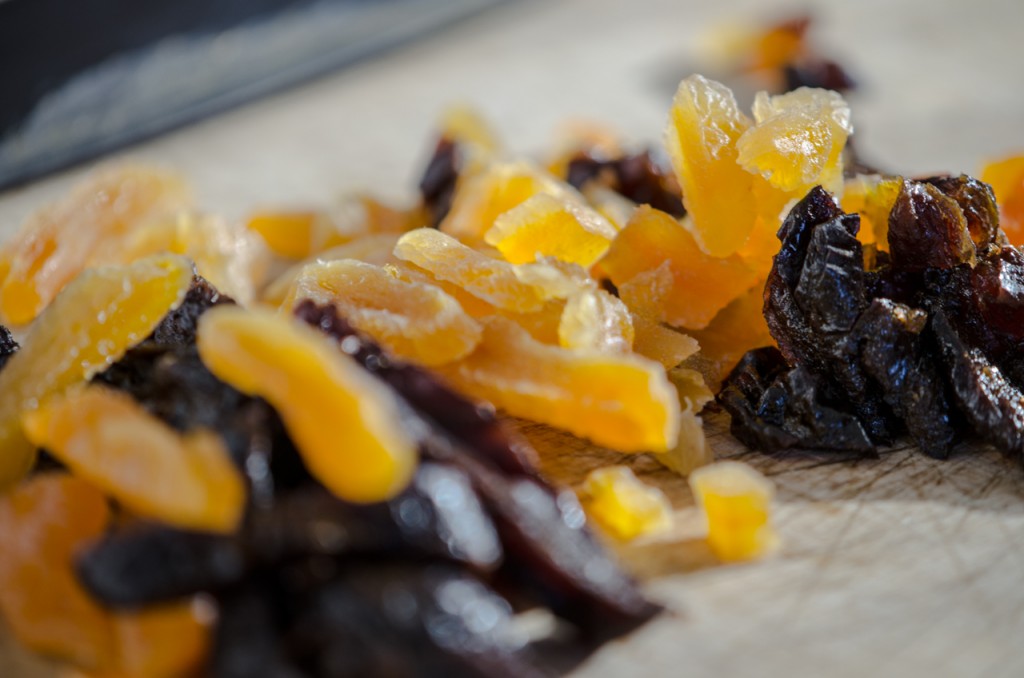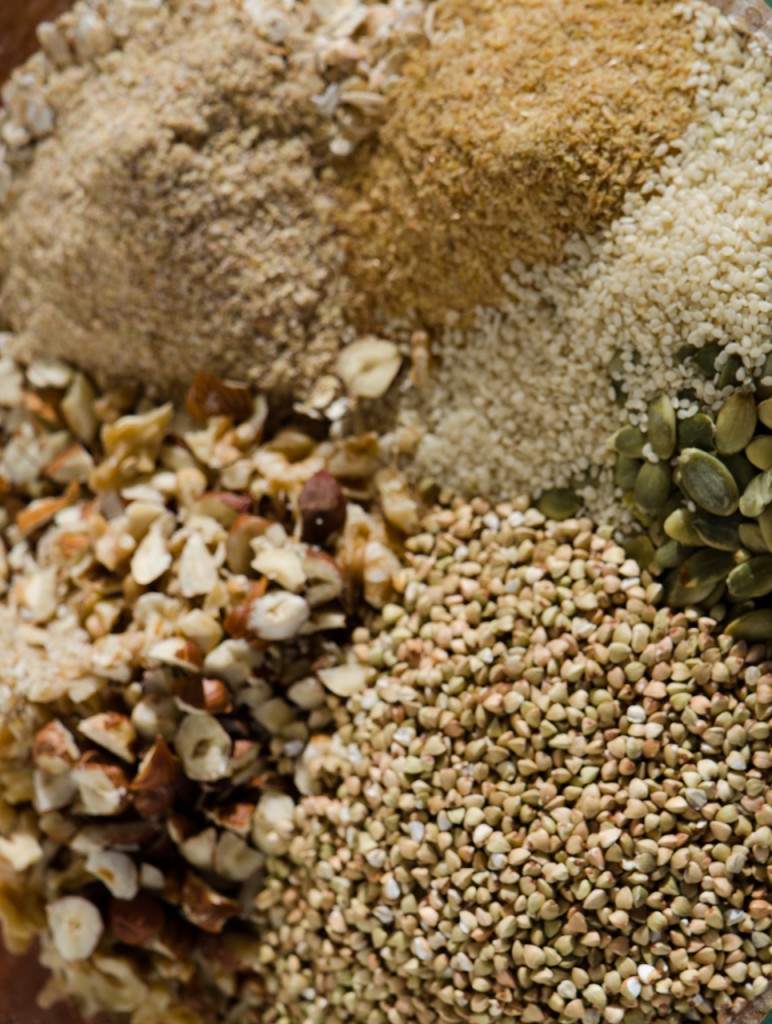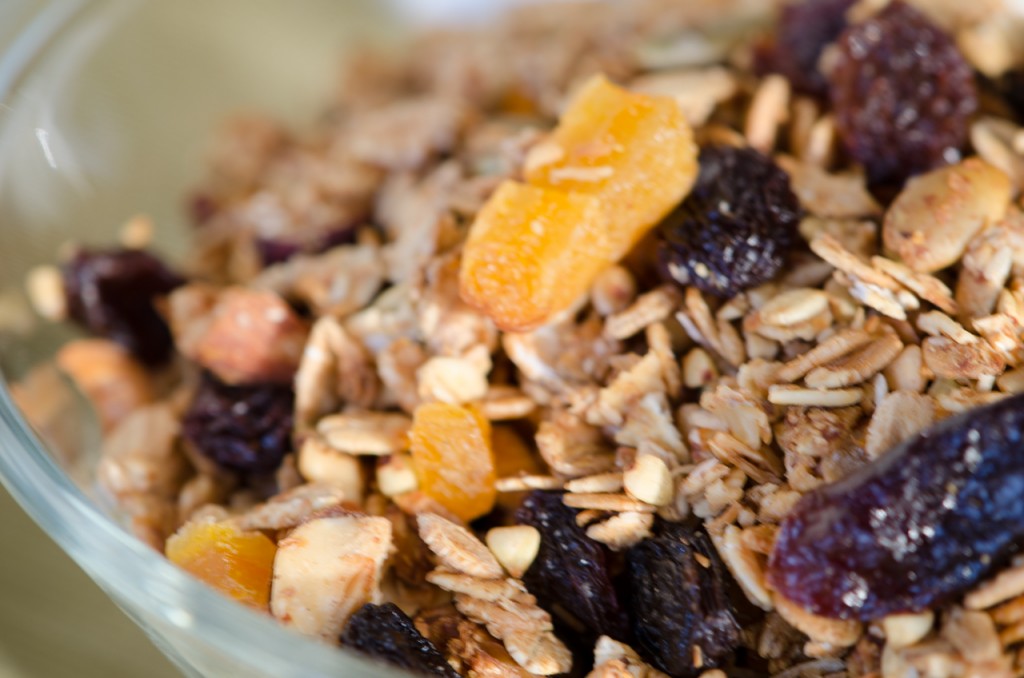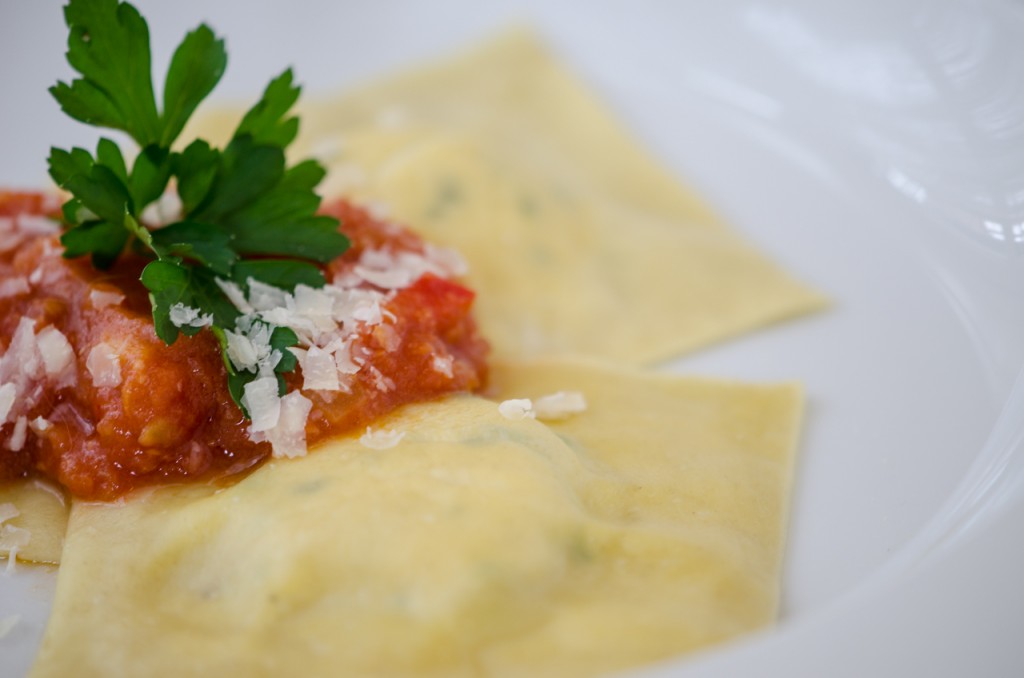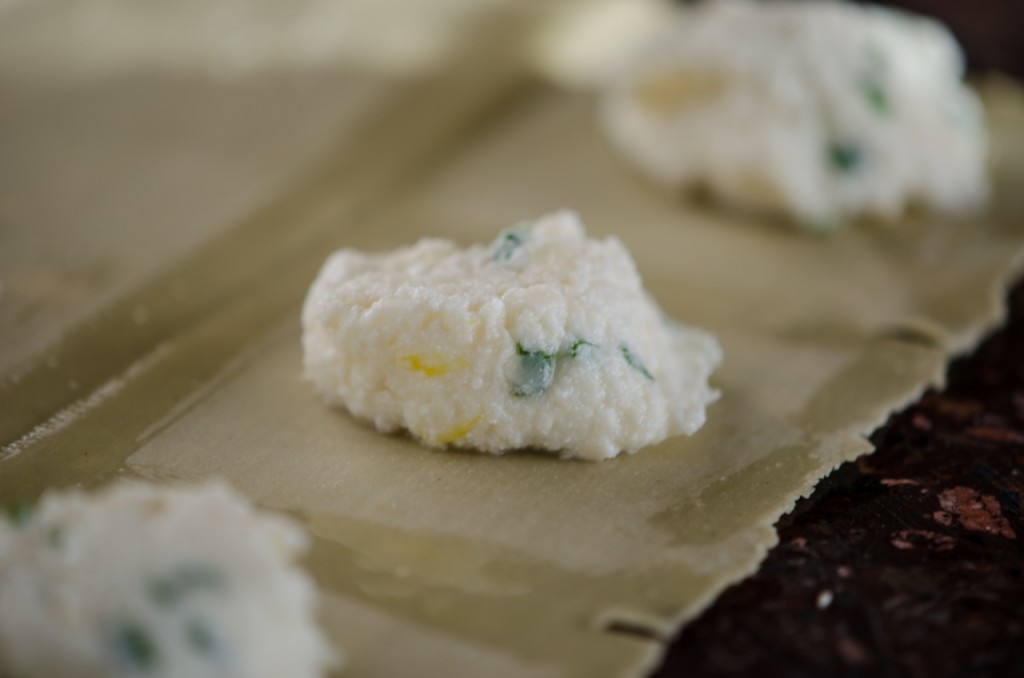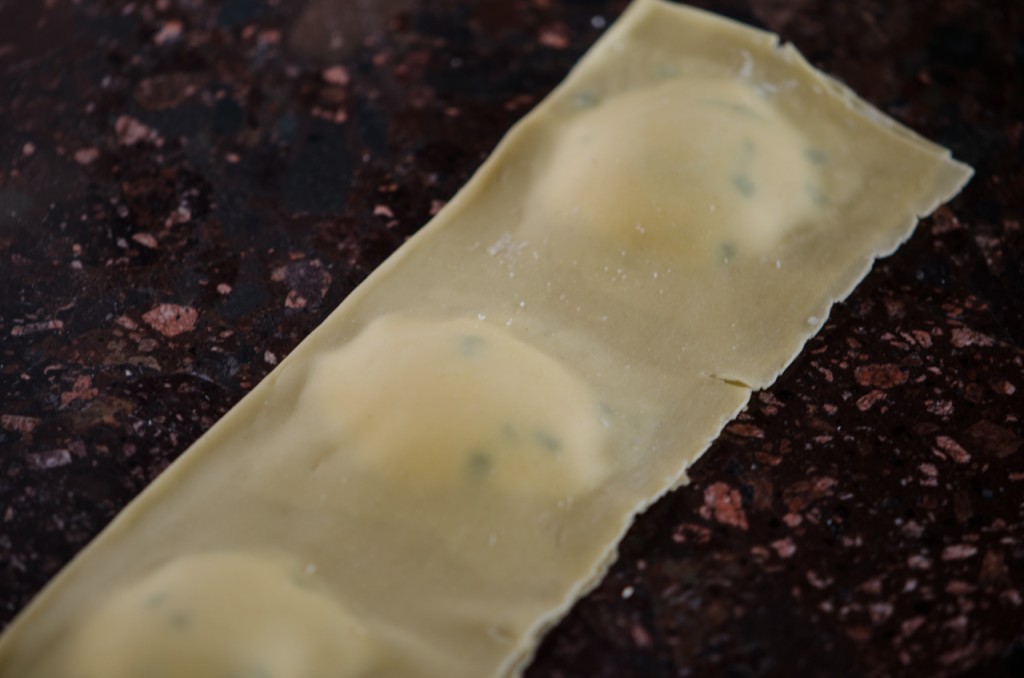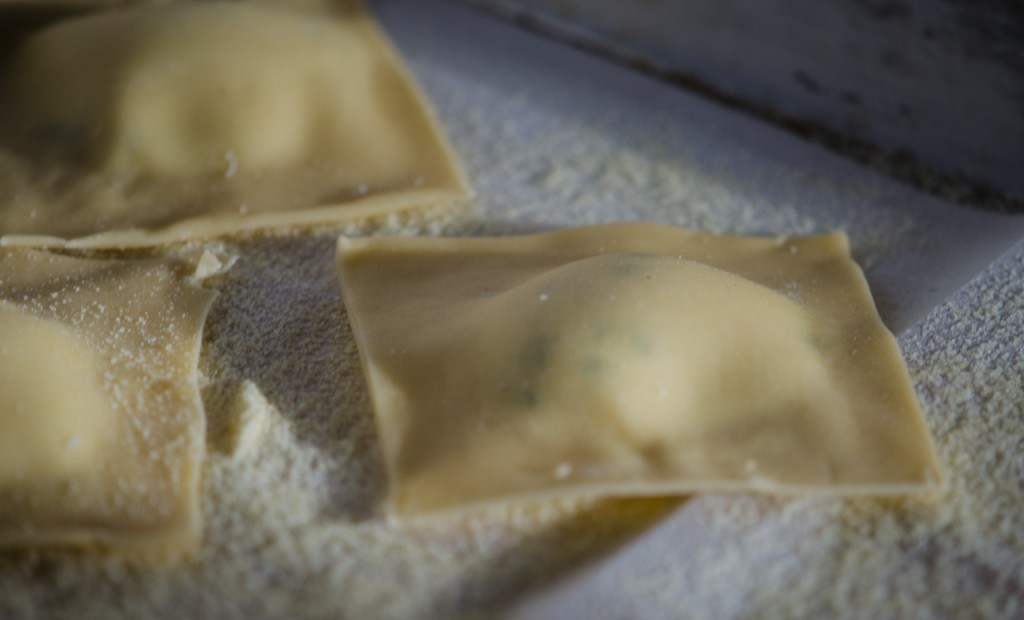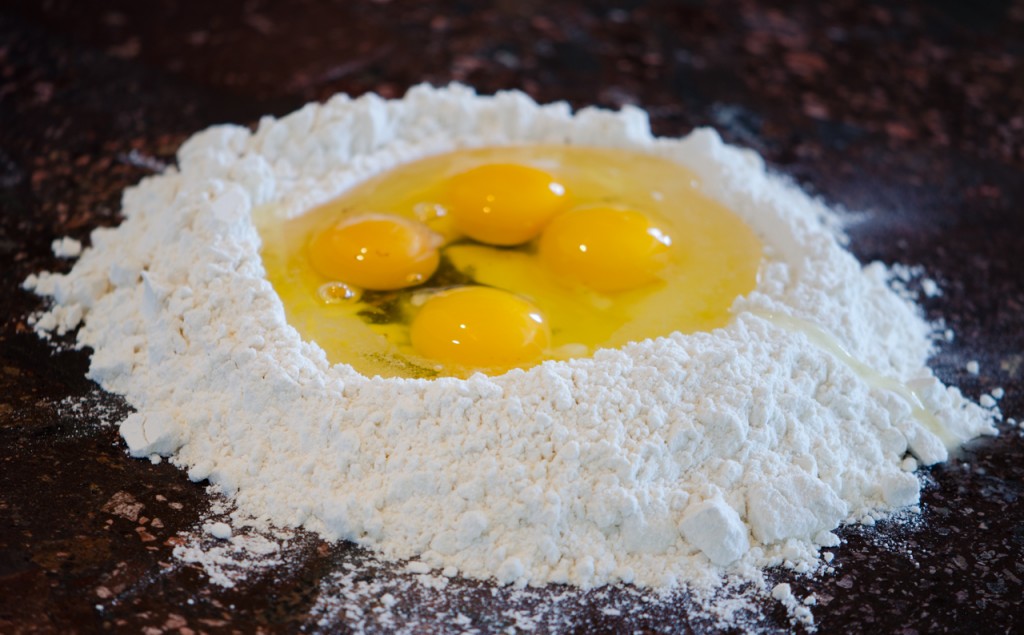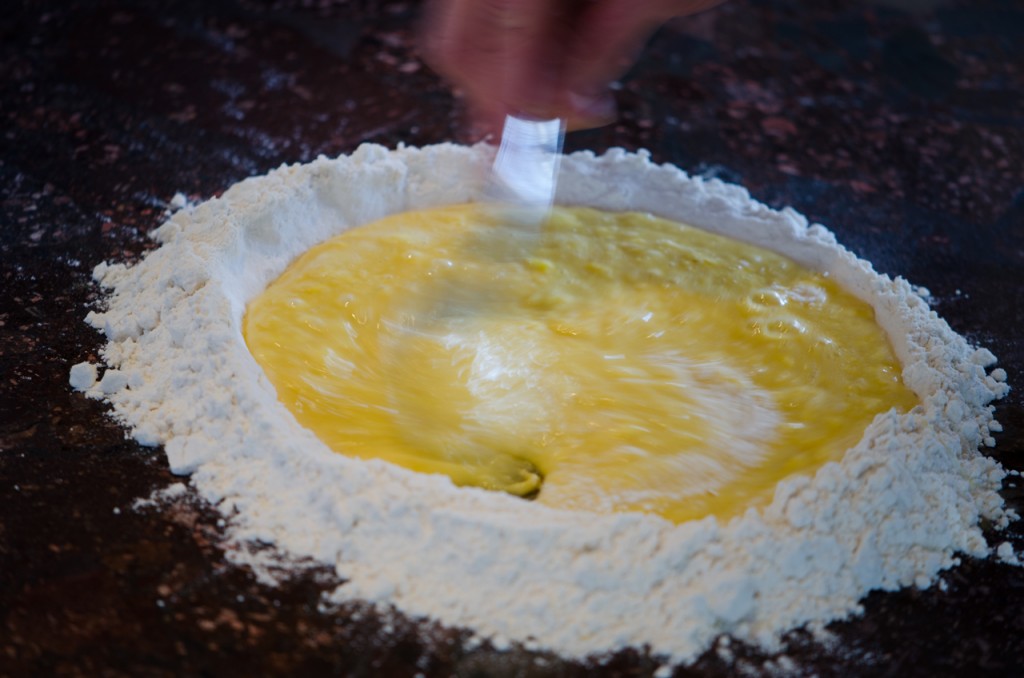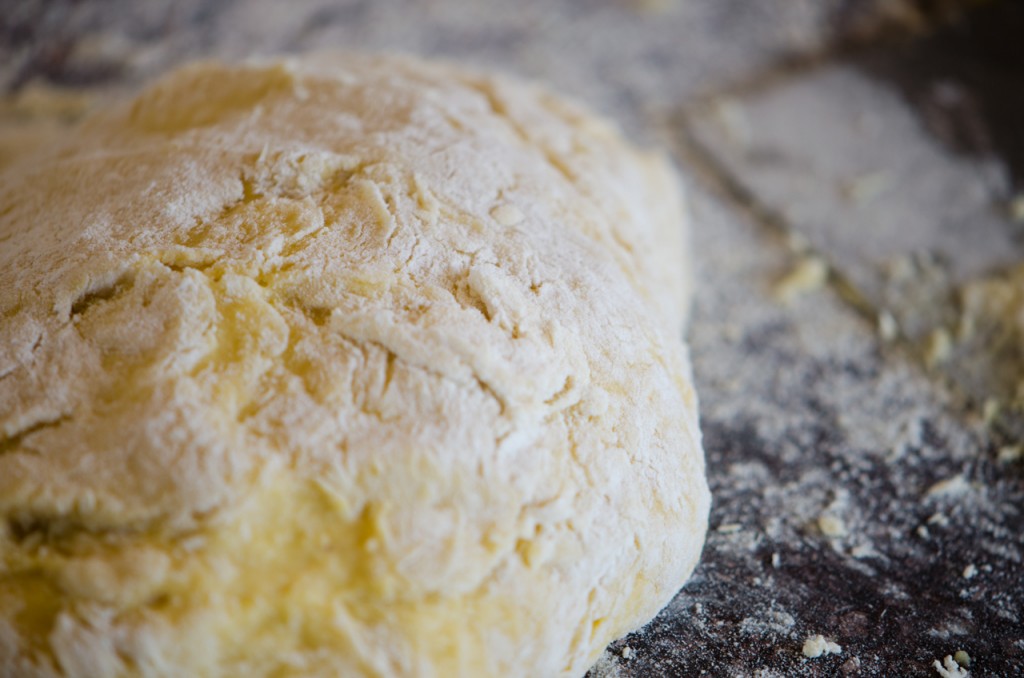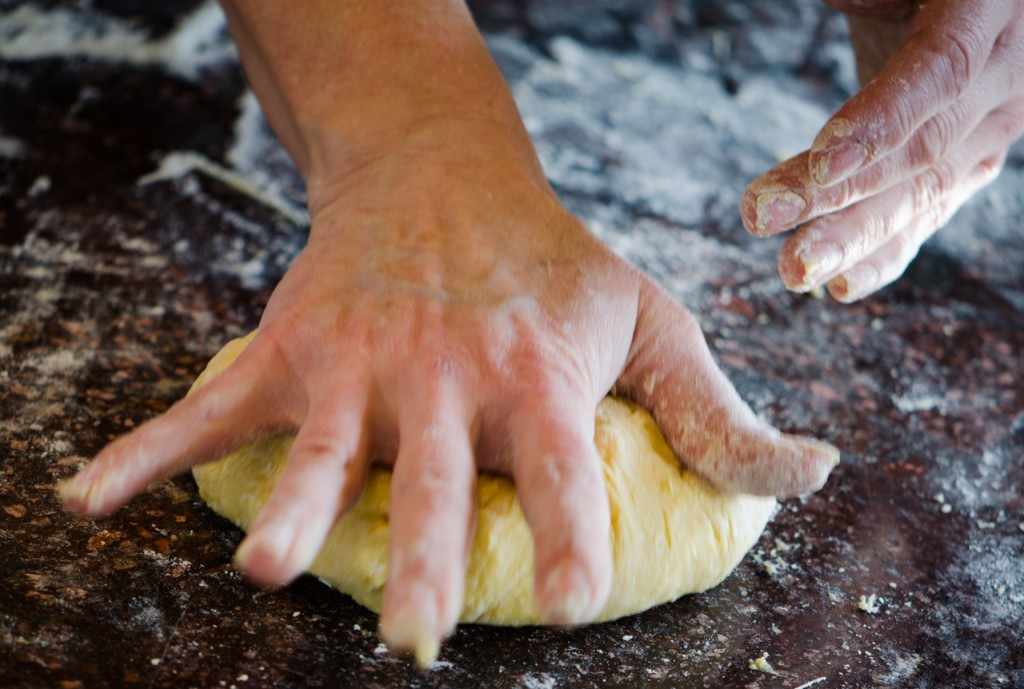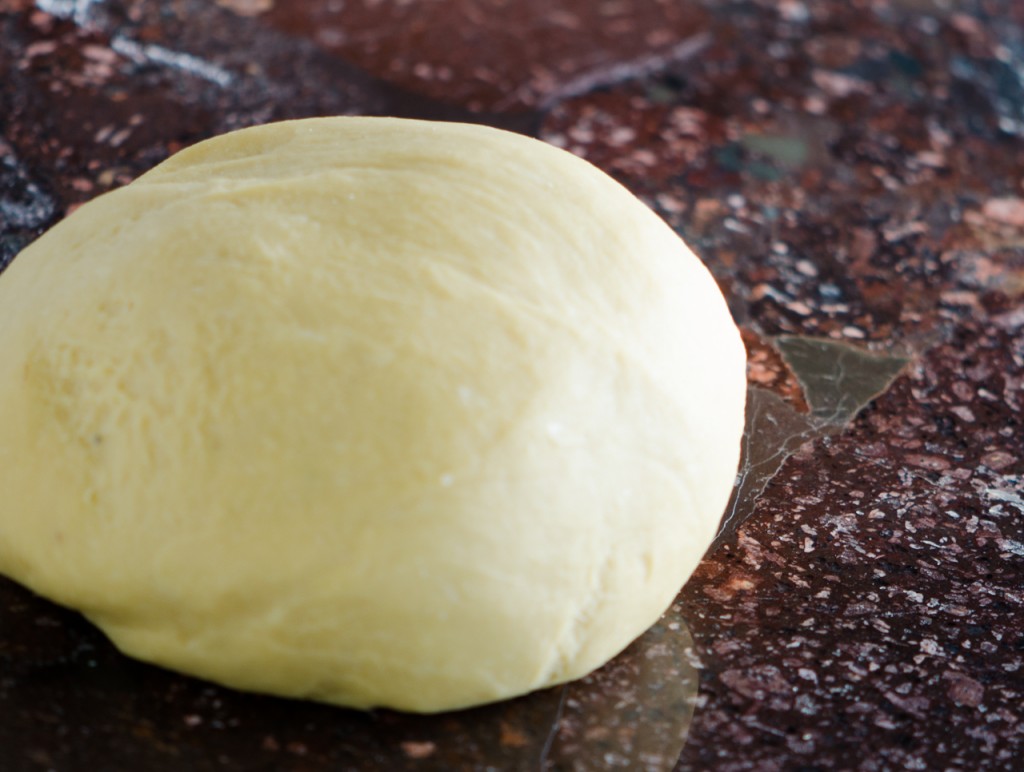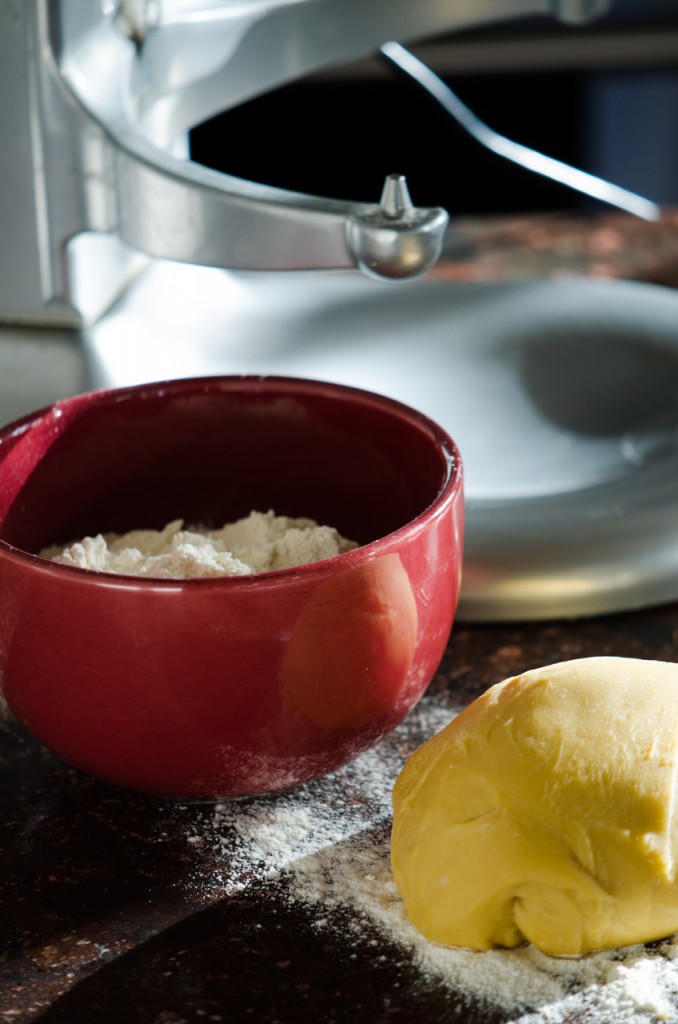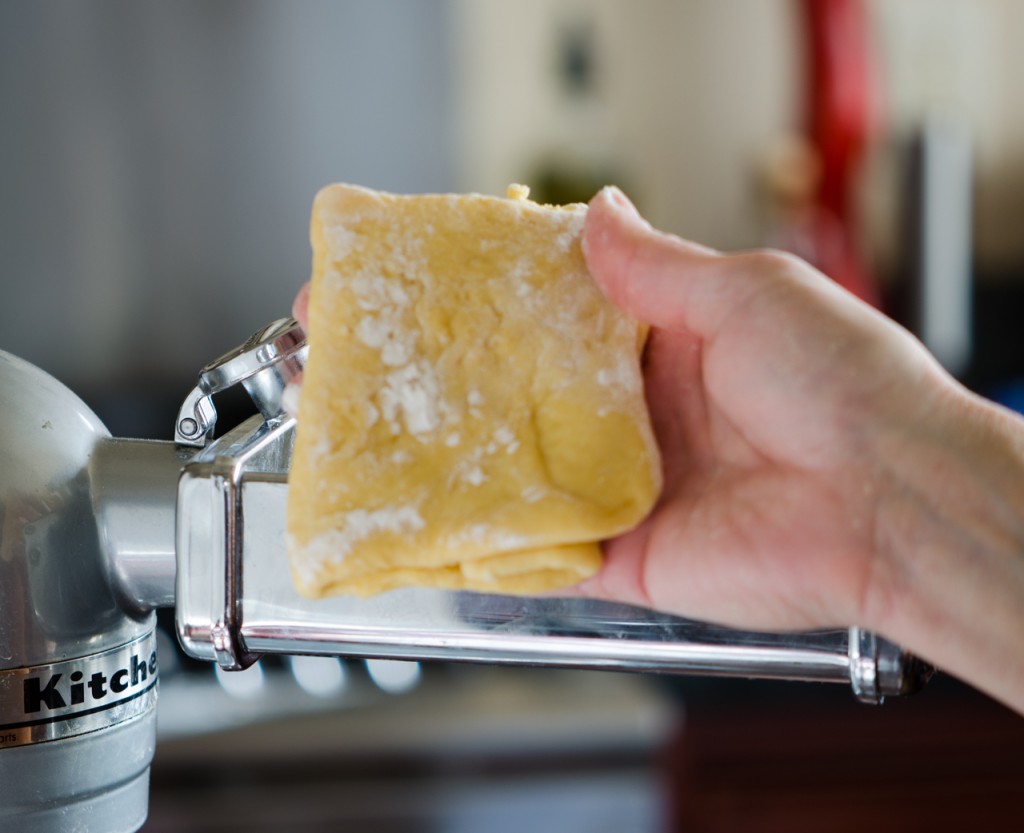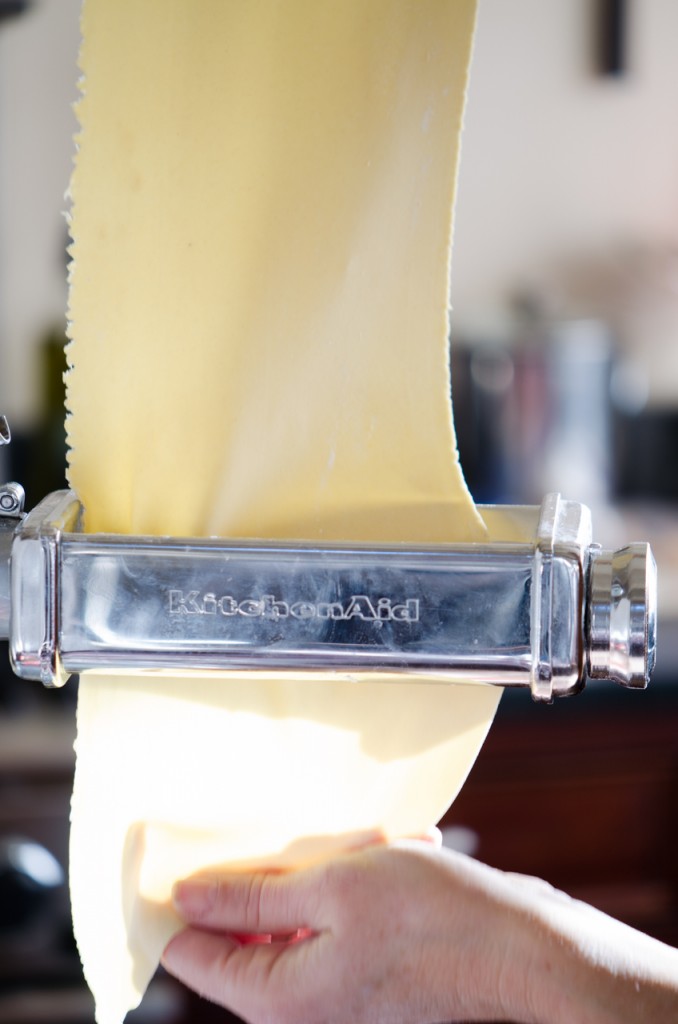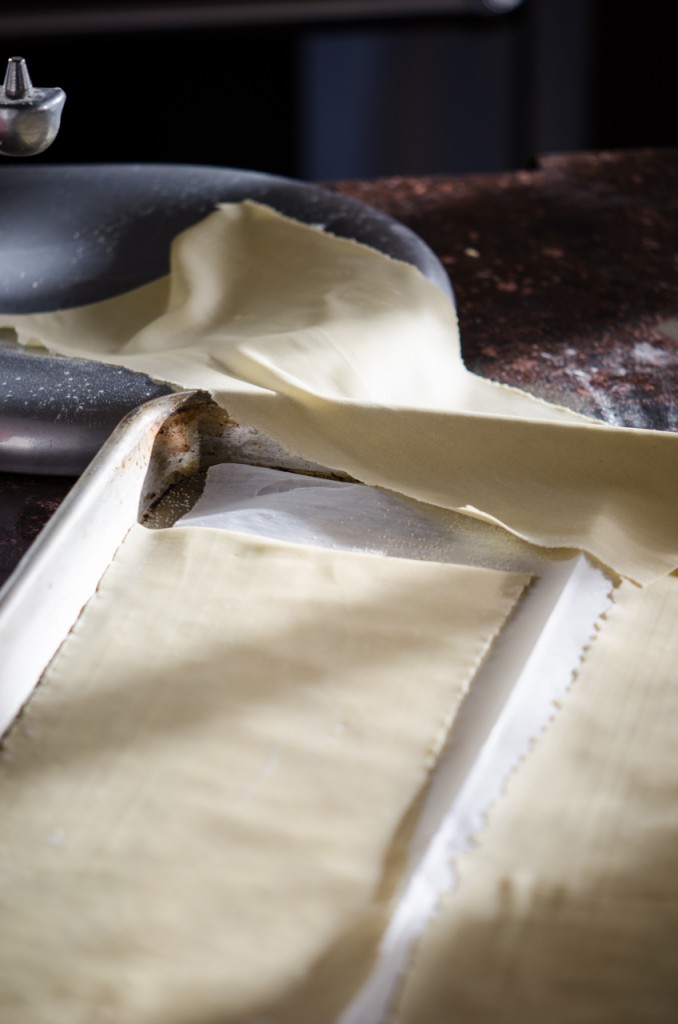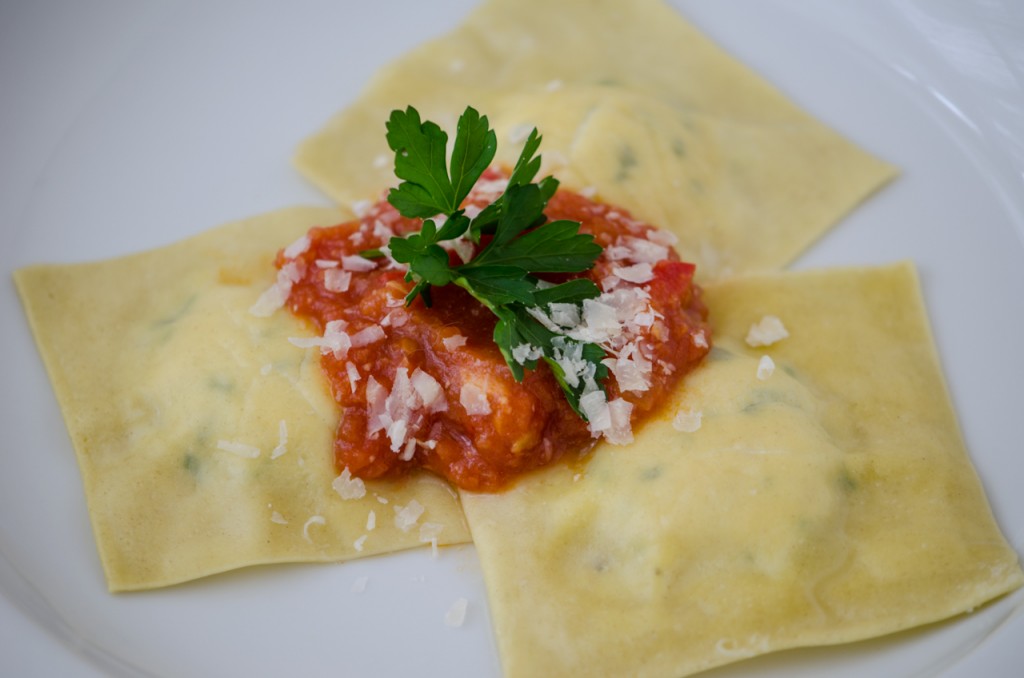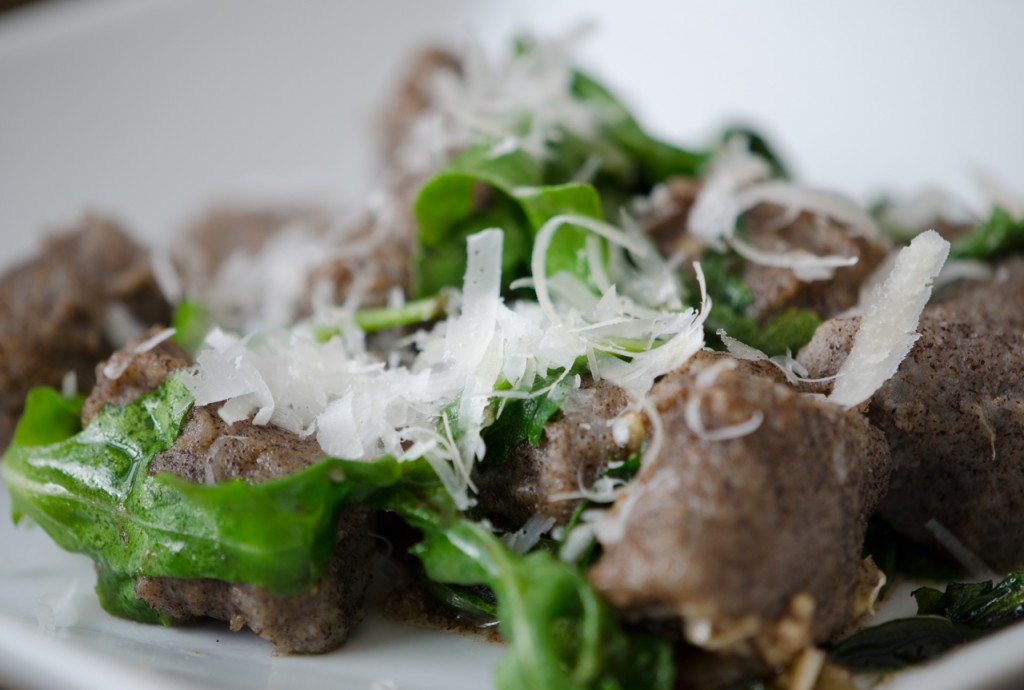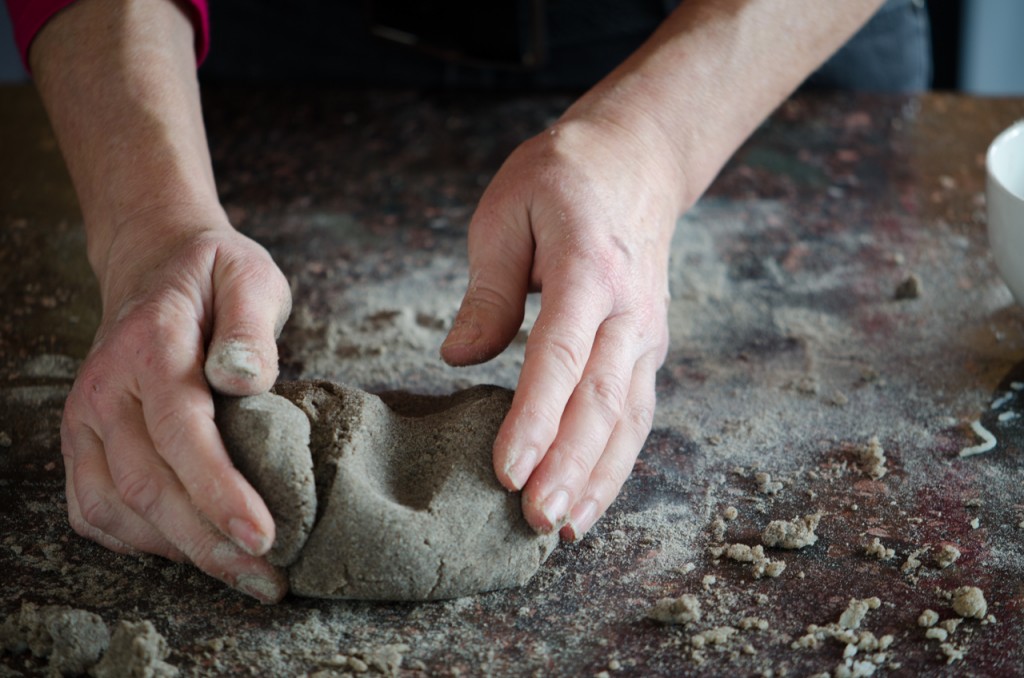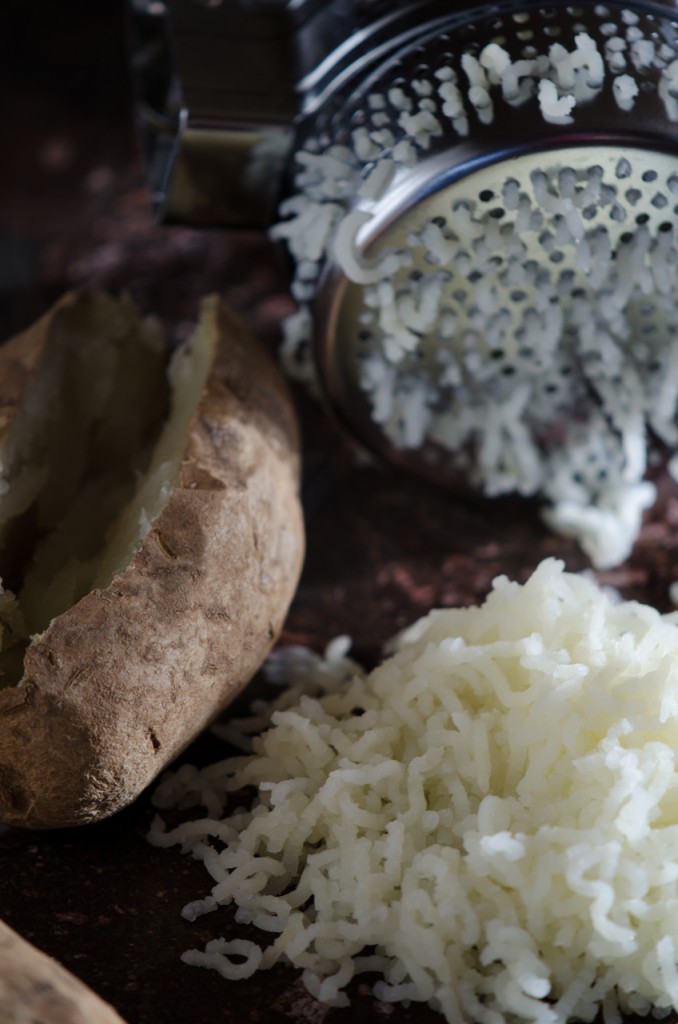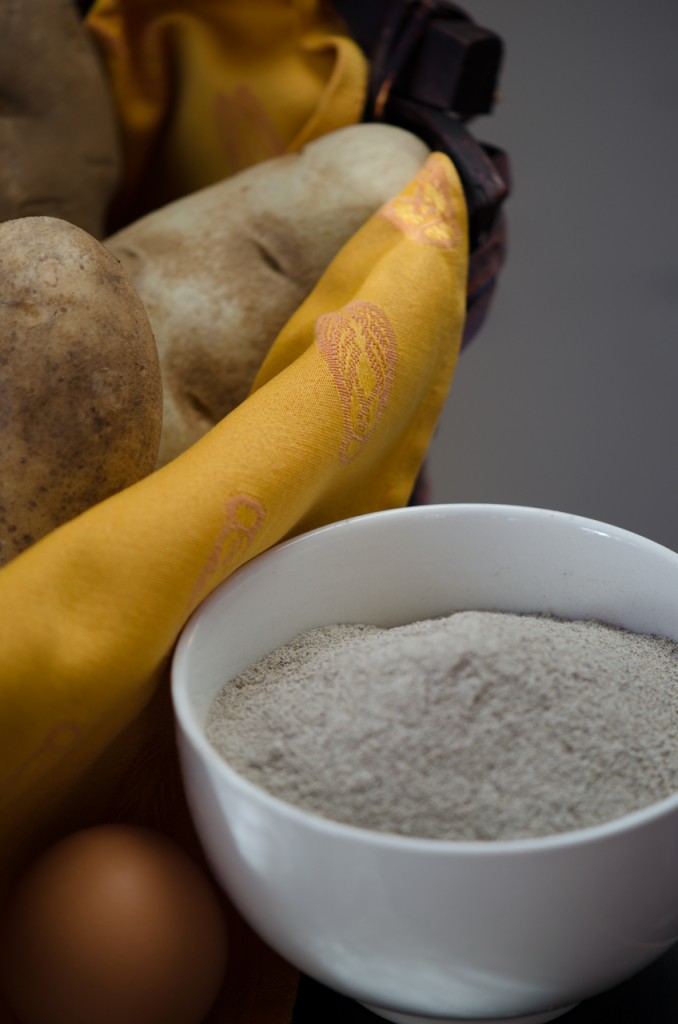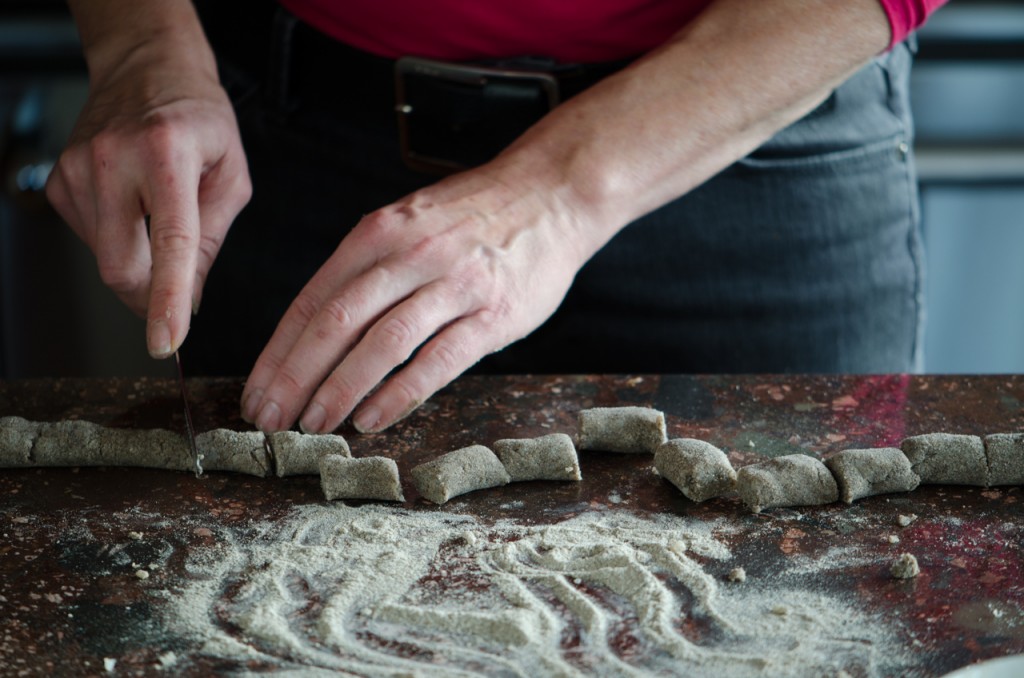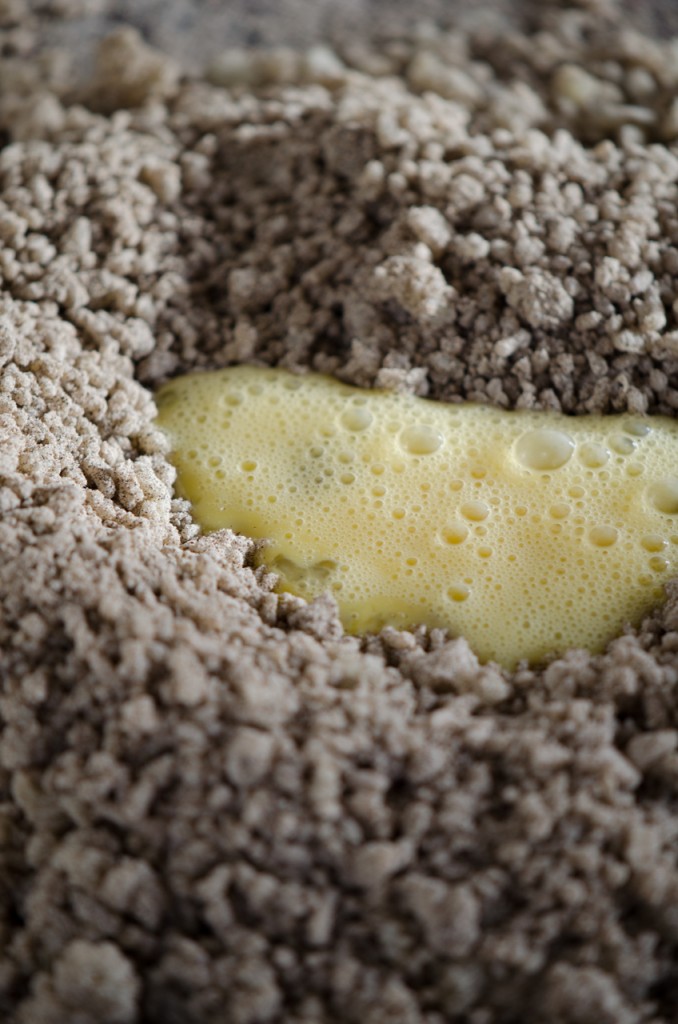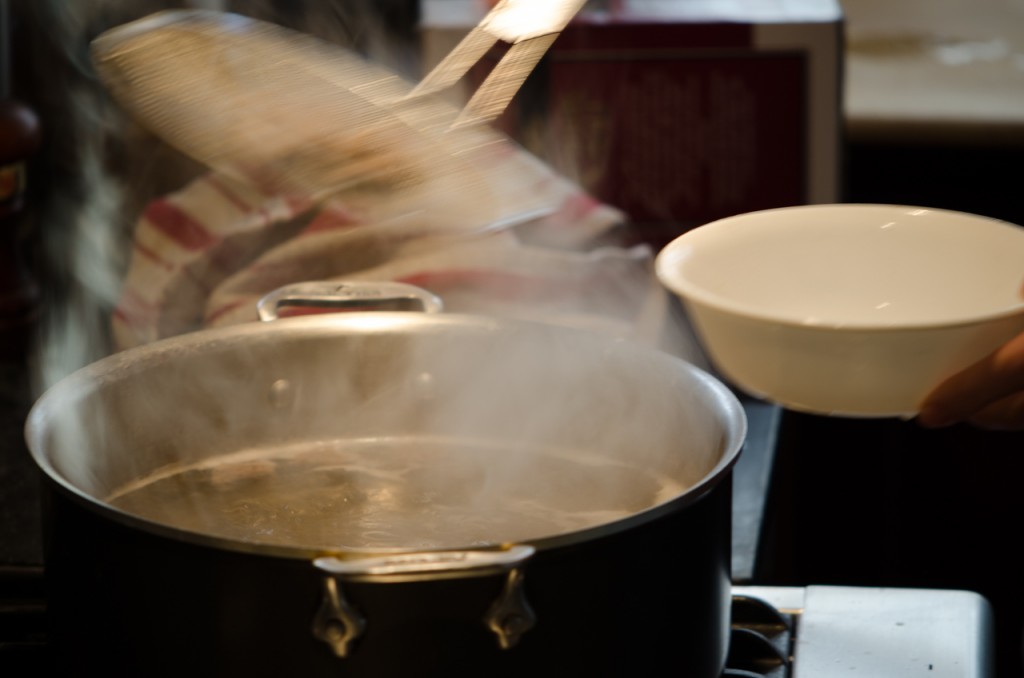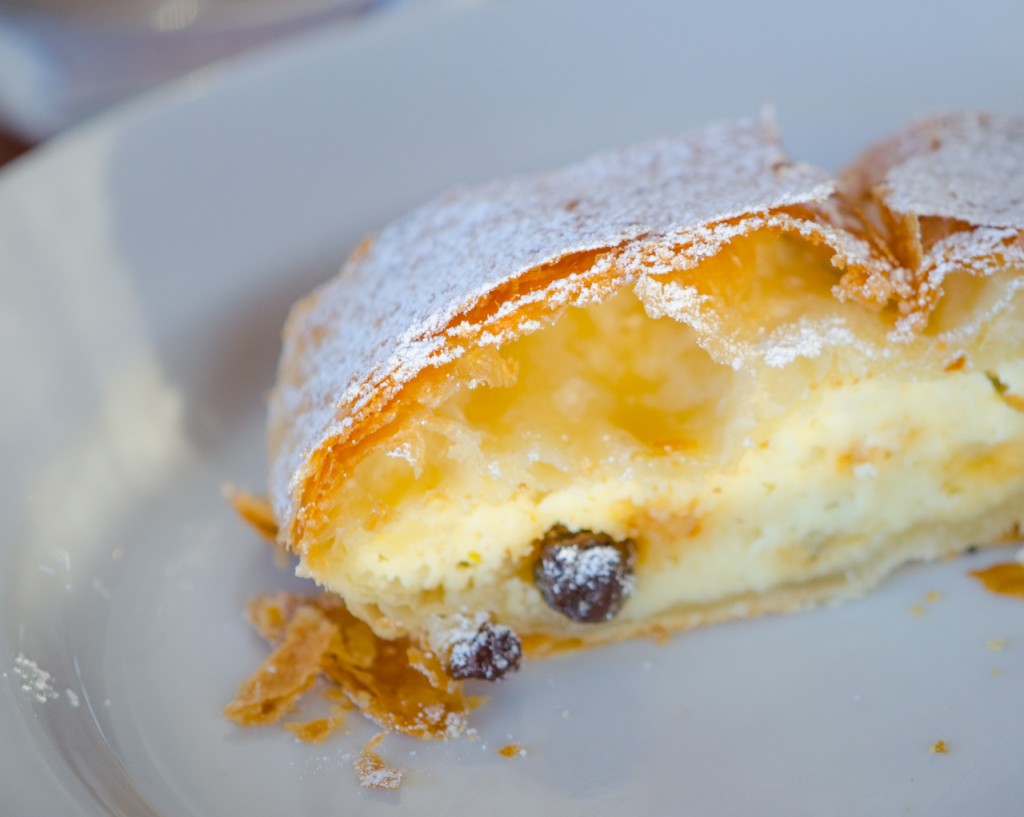 Ricotta cheese is an Italian whey cheese found all over Italy. Virtually every cheese producer we find on our Italy gourmet bike tours or ski adventures make some sort of ricotta, along with their other products. Whey is the liquid that remains after straining curds when making cheese. Rather than disposing of this, cheese makers will turn this into a ricotta, or ‘recooked’ cheese.
Ricotta cheese is an Italian whey cheese found all over Italy. Virtually every cheese producer we find on our Italy gourmet bike tours or ski adventures make some sort of ricotta, along with their other products. Whey is the liquid that remains after straining curds when making cheese. Rather than disposing of this, cheese makers will turn this into a ricotta, or ‘recooked’ cheese.
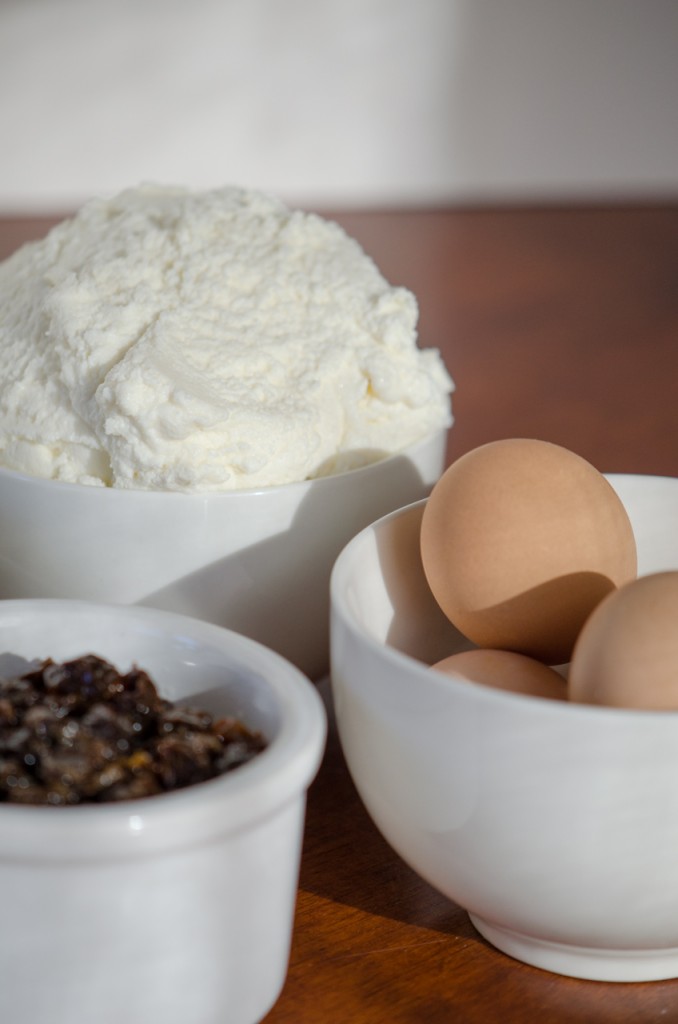
As cheese is made, much of the milk protein is removed, but some proteins, mostly albumin, remain in the whey. This last bit of protein can be used if the whey is first made more acidic through additional fermentation, then heated to near boiling. The combination of low pH and high temperature denatures the protein and causes it to separate out, forming a fine curd. The liquid is then strained off, and what remains is a light, fluffy fresh cheese, soft and creamy, with a mild flavor that serves wonderfully as a blank canvas for other flavorings.
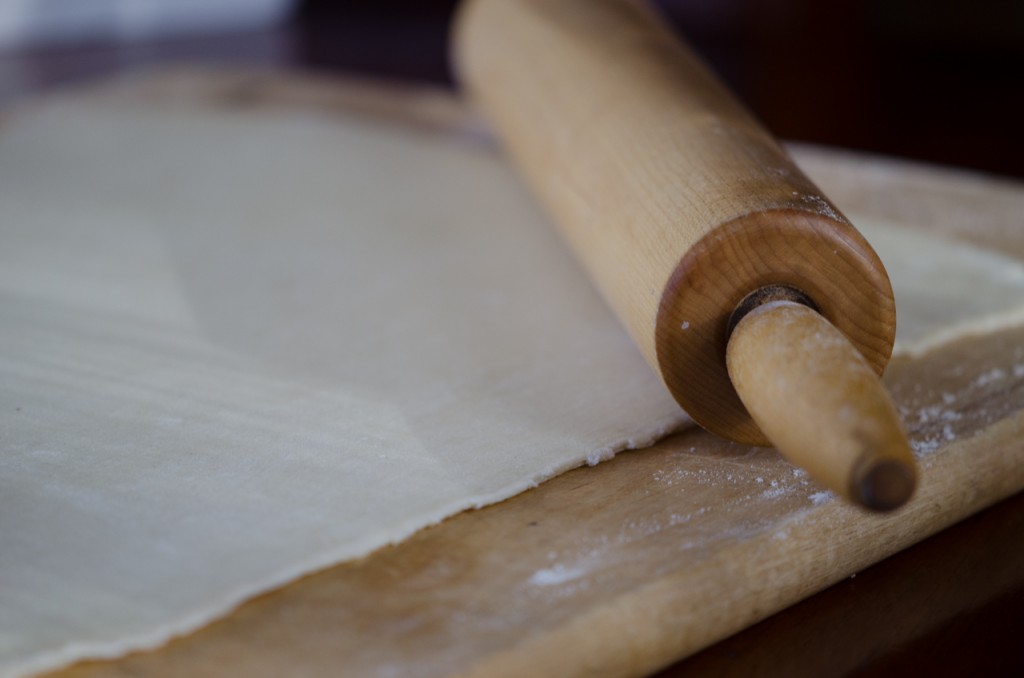
Ricotta is made from all types of milk – sheep, goat, cow, even buffalo. It is used in many stuffed pastas, but today I am using it in a sweet dessert. In Italy, it is often combined with honey, dried fruit, nuts and even chocolate in desserts such as cannoli, cheesecakes, and other treats. I’ve made a delicious Torta di Ricotta with many of my cooking classes. Here, I’ve used ricotta to make an Italian pastry dessert, a Ricotta strudel. The recipe includes directions for your own puff pastry, but this can be prepared very easily using store-bought puff pastry.
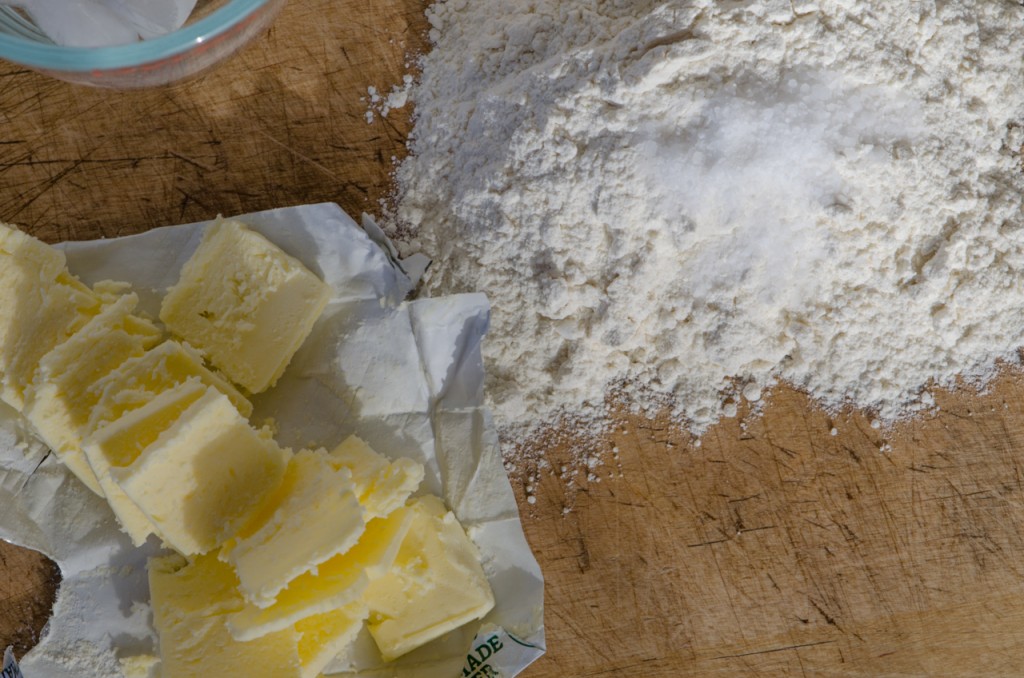
The puff pastry recipe here is not strictly traditional, but a ‘rough’ version developed by Chef Judy Rodgers in her wonderful Zuni Cafe cookbook. I know other chefs who rely on this recipe, which is simpler but still results in a light, flaky pastry, although with slightly less ‘puff’ than the real thing. If you can make your own pie crust, this is not much more difficult, and well worth the effort!
Strudel di Ricotta
For puff pastry strudel dough:
1 cup all-purpose flour
1 teaspoon salt
8 tablespoons cold unsalted butter (1 stick)
5 to 6 tablespoons of ice water
For ricotta filling:
3 tablespoons raisins
1/4 cup grappa, other liquor or water
2 1/4 cups ricotta cheese
1/2 cup superfine sugar
1 egg
1 egg yolk
rind of 1 lemon, grated
1 egg, beaten
For pastry dough:
Place the flour and salt on a counter and mix together.
Cut the butter into 1/4 inch slices. Lay in the flour and coat the butter slices with the flour. Press the slices thin, using a metal spatula. Spread the flour and butter in a circle on the counter and trickle the water over it, one tablespoon at a time, stirring it with your fingers in the butter and flour until it is absorbed. Between each addition of water, use your fingers to lift and move the flour and butter around.
After the water has been added, use a scraper to move the mass together, sliding the scraper under the pile and folding it on top of itself. Then, using the heel of your hand, push down and away on the mass, smearing the mass on the counter. Slide the scraper underneath the mass again, lift and fold on top of itself again. Turn the mass 90°, then using the heel of your hand, push down again on the dough. At this point, all the loose bits of dough should be incorporated, and there should be no dry spots. It will not look smooth or homogeneous in texture. If you still have a fair amount loose bits hanging around, repeat the process of pushing down and away with the dough, then gathering and folding, until it is. Wrap loosely and refrigerate for 30 minutes. If you chill it longer than that, it may need to warm up a bit before it will roll out without cracking.
Measure out a small amount of flour, and dust the counter top and a rolling pin. Roll the dough out, going away from and then toward you, into a rectangle roughly about 18 inches long and 6 inches wide. Fold into thirds (like a letter) from one of the short ends, and then the other. Turn the folded dough 90°, then roll again into the same size rectangle, and repeat the folding process. Rewrap the dough and refrigerate for another 20 minutes.
Repeat this process of rolling, folding, rolling and folding two more times, chilling for 20 minutes in between. After the last set of rolling and folding, refrigerate the dough for at least an hour. At this point, it can be wrapped tightly and kept overnight, or even frozen.
For strudel:
Preheat the oven to 375°.
Place the raisins in a bowl, add the grappa to cover and let soak while you roll out the dough.
Remove the dough from the refrigerator, and allow to sit at room temperature for about 10-15 minutes, to make sure the dough is warm enough to roll without cracking. Roll the dough out on a pastry board into a 16 x 12 inch rectangle, optionally cutting two thin strips of dough along the longer sides for decoration, and putting these aside. Place the dough on a greased baking sheet, or one covered with parchment paper. Refrigerate while you prepare the filling.
Drain the excess liquid from the raisins. Beat the ricotta in a bowl until smooth, then stir in the raisins, sugar, egg, egg yolk and lemon rind. Spoon the filling onto the dough in a 3” wide strip down the middle – you want to leave enough dough uncovered to completely encase the filling – and close the remaining dough over the strudel. Carefully roll the strudel over so the seam where the ends of the dough meet is on the bottom.
Brush the strudel with a beaten egg, decorate with the remaining strips of dough if you wish, and bake until a light golden brown, about 40 minutes. Allow to cool.
Sprinkle the strudel with confectioner’s sugar, cut into slices, and serve with whipped cream, or a drizzle of grappa.
